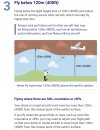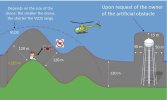There's nothing incorrect about what I posted.Thats incorrect, taking off from B would put the drone at 500ft, taking off from A would put the drone at 100ft,
The drone sets the height to zero from take off point hence why you can still fly at 400 ft max from point A
What is incorrect is your uninformed statement that "the max height allowed is taken from zero feet at point of take off".
My artwork was to make it obvious that such a system makes no sense at all.
What matters is how high your drone is above the ground below it and where you launch from is completely irrelevant.
It's amazing that someone who's been a member for 7 years hasn't understood this very basic fact.












